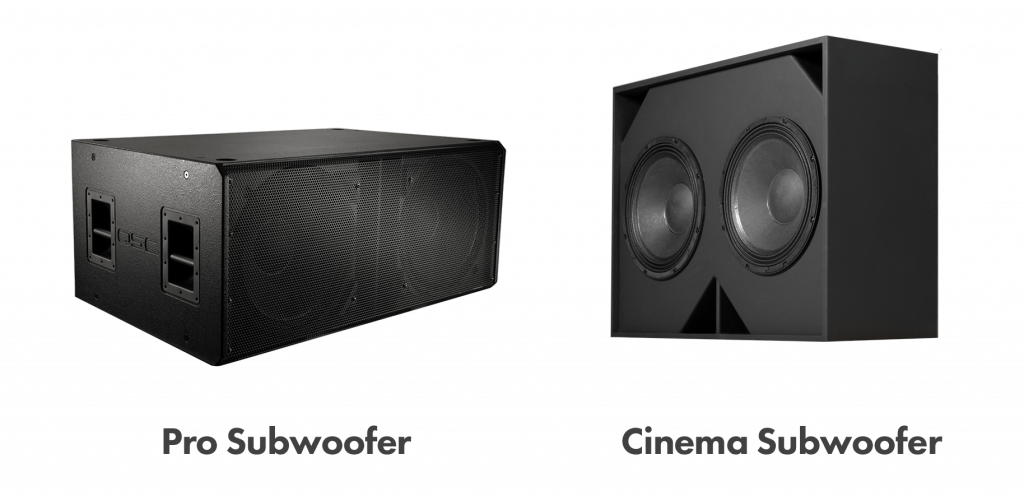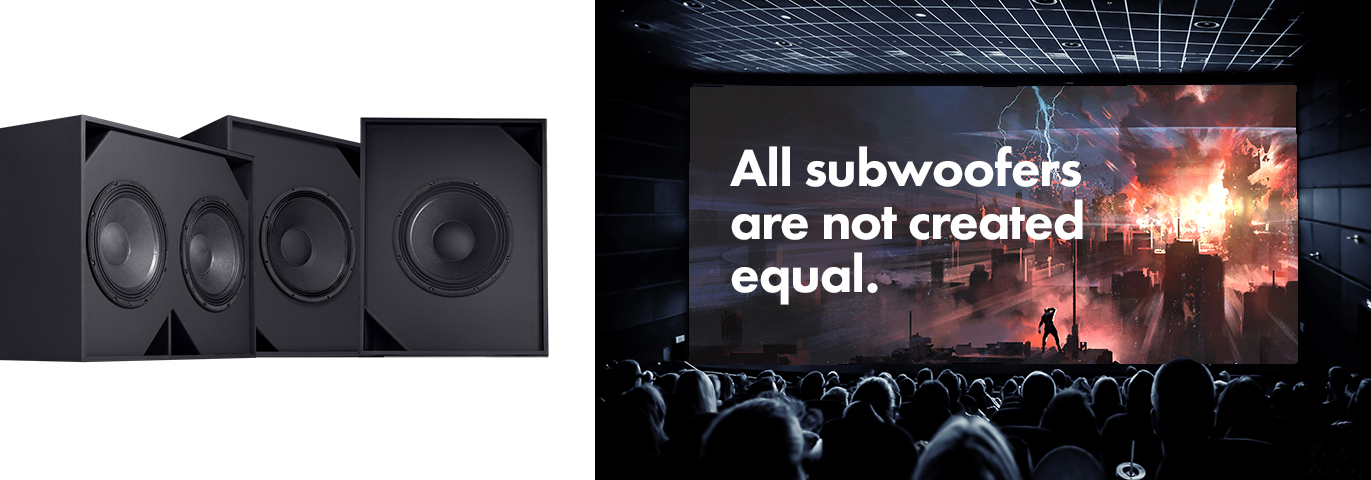How are cinema subwoofers different from professional audio subwoofers?

Superficially, subwoofers for cinema and for professional audio applications may seem quite similar. While both are often big black boxes with dual 18” subwoofers, there are many differences due to the specific needs of each application. Let’s look at some of the differences between a cinema subwoofers, like the QSC SB-7218 and pro audio subwoofers, like our GP218-sw.
The Acoustical Difference
From an acoustic performance perspective, cinema subs are designed to play lower bass than the usual pro audio subwoofer due to the extended low frequency sound effects created by filmmakers. Getting deeper bass requires a number of tradeoffs that aren’t ideal for pro audio use.
As frequency goes down, the cone excursion increases dramatically. This means that cinema subwoofers run out of mechanical cone excursion at much lower power levels than typical pro audio subwoofers. For this reason, in a cinema application, its common to use more subwoofers powered by smaller amplifiers to improve performance, not excessive power. That could mean Premium Large Format cinemas have up to as many as eight QSC SB-7218 dual 18” subwoofers.
Extended bass performance usually requires a larger box volume. This is not a big deal for cinema subwoofers that are shipped one time and set up out of view in a large room. However, smaller is better for subwoofers trucked to different sites every day or that need to fit in to a small space. Since they have to go behind the screen and curtains, the most critical dimension for cinema subwoofers is depth. Height and width are rarely an issue, so the larger box volume or use of more subwoofers can be easily accommodated.
What Features to Consider
As far as more practical features, cinema subwoofers differ quite a bit from professional audio subwoofers. Since a multiplex uses a lot of subwoofers, low cost is critical.

Since the cinema subwoofers are installed one time, they do not have handles that are typically found on pro audio subwoofers. Cinema subs are installed out of sight behind screens or curtains, so there is no need for grills or attractive paint finishes. They are typically painted flat black, do not have logos and use black hardware to prevent any reflections showing through the screen perforations during the movie.
In addition, they use lower cost MDF for the cabinet instead of birch plywood. MDF is quite dense and works great acoustically, but it can’t handle the bumps and impacts that portable subwoofers need to endure. MDF is also more susceptible to water damage, but since cinema subwoofers are never hauled in and out of trucks in the rain, it’s not really an issue. Just like Gremlins, don’t get them wet.
QSC subwoofers are amazing when properly applied. Using the right product for the right application will result in awesome performance and reliability. Trying to overpower a cinema subwoofer and not using enough will only result in blown loudspeakers.

All great points Barry! One aspect we’ve found, however, is that grills can often been necessary to prevent cone damage by vacuums or even by patrons. Subwoofers in cinemas are the one piece of sound gear that are inherently within the patron’s reach and are often just behind the skirt of the screen. We’ve had to not only put grills on them but also grills on the ports to prevent “critters” or even trash from going in there.